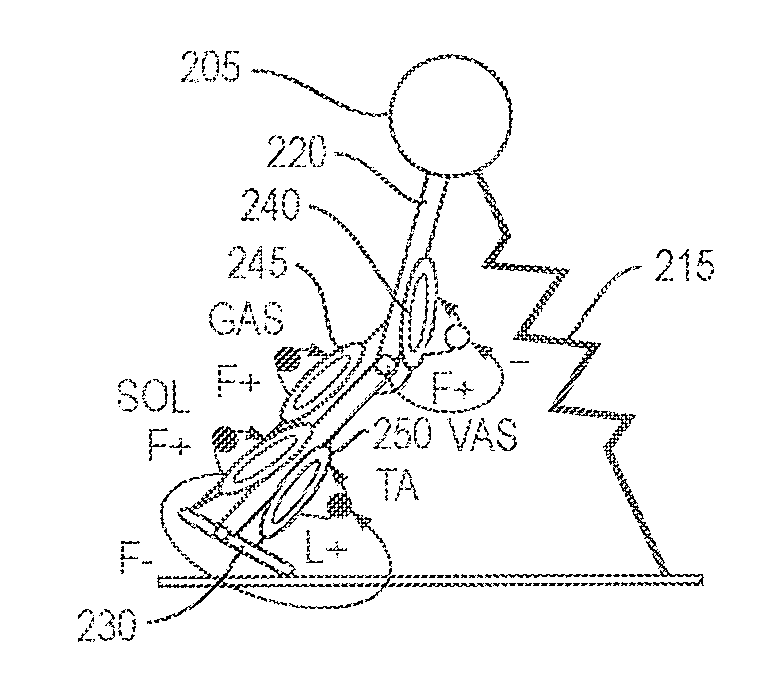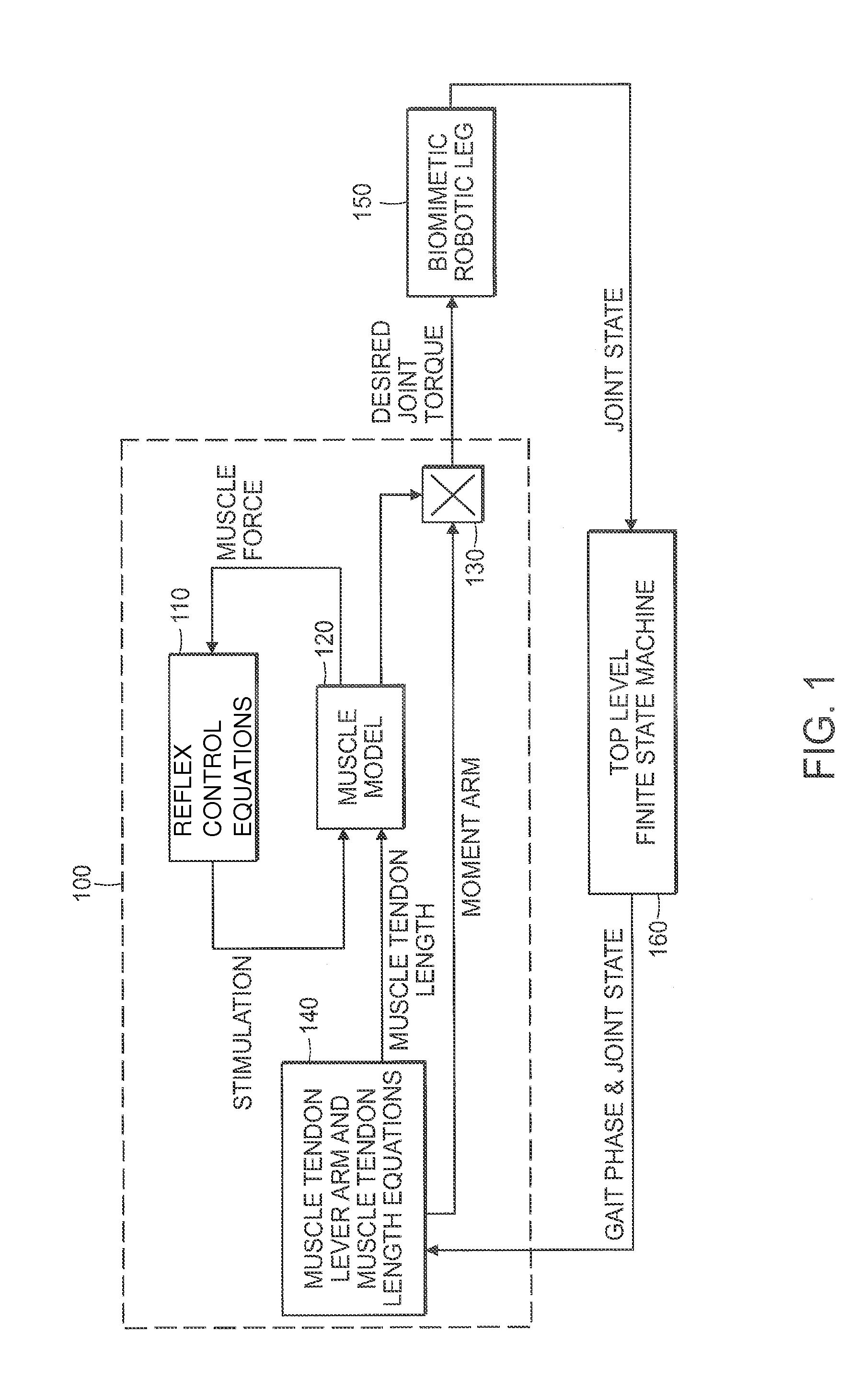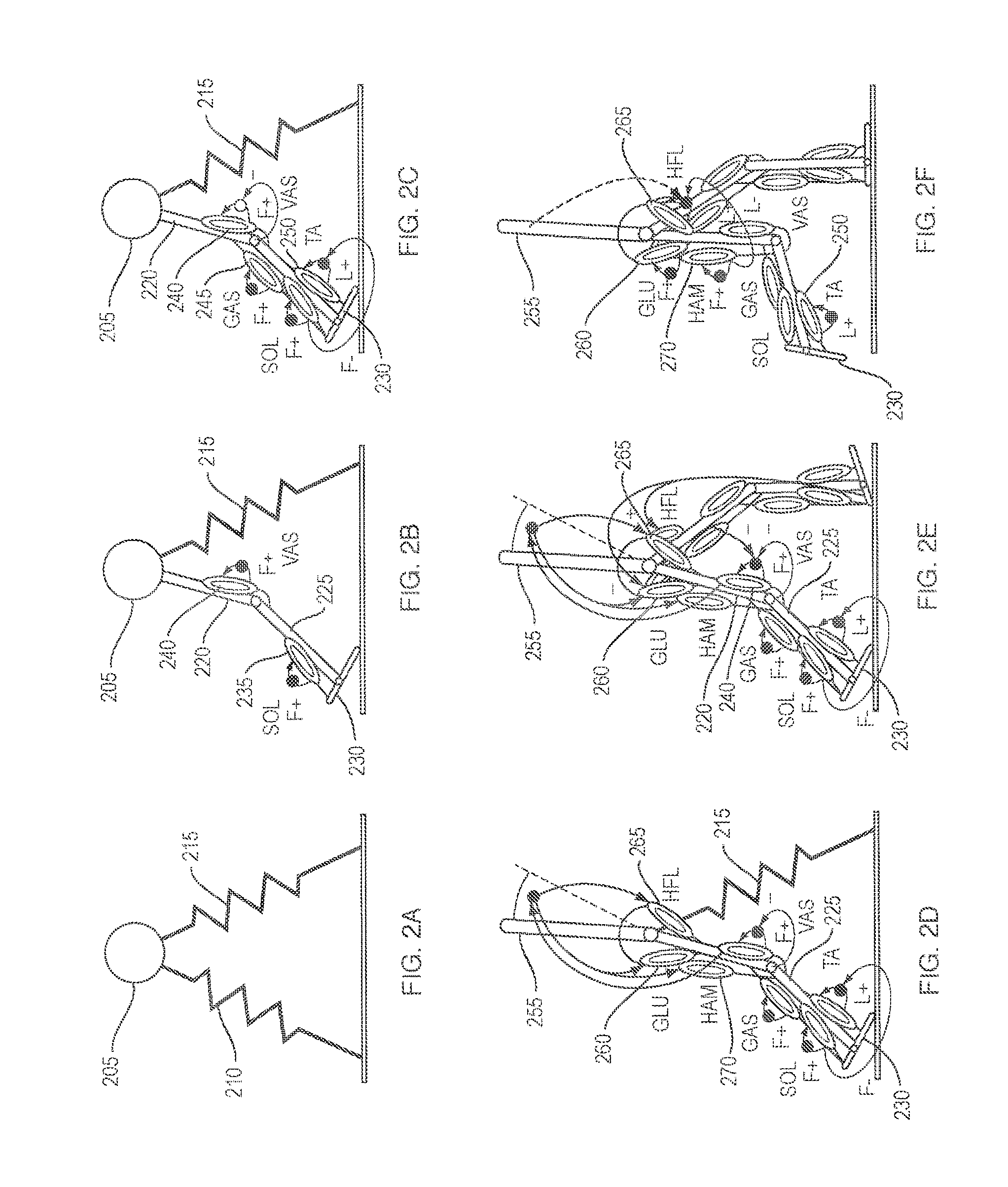Model-Based Neuromechanical Controller For A Robotic Leg
a neuromechanical controller and robotic leg technology, applied in the field of artificial joints and limbs control, can solve the problems of little attention paid to understanding how such architectures might represent or encode locomotion mechanics principles, passive ankle-foot prostheses cannot provide the capability of terrain adaptation, and raise the issue of control
- Summary
- Abstract
- Description
- Claims
- Application Information
AI Technical Summary
Benefits of technology
Problems solved by technology
Method used
Image
Examples
Embodiment Construction
[0043]A control architecture is presented to command biomimetic torques at the ankle, knee, and hip joints of a powered leg prosthesis, orthosis, or exoskeleton during walking. In this embodiment, the powered device includes artificial ankle and knee joints that are torque controllable. Appropriate joint torques are provided to the user as determined by the feedback information provided by sensors mounted at each joint of the robotic leg device. These sensors include, but are not limited to, angular joint displacement and velocity using digital encoders, hall-effect sensors or the like, torque sensors at the ankle and knee joints and at least one inertial measurement unit (IMU) located between the knee and the ankle joints.
[0044]Sensory information of joint state (position and velocity) from the robotic leg (hip, knee and ankle) is used as inputs to a neuromuscular model of human locomotion. This model uses joint state sensory information from the robotic leg to determine the intern...
PUM
 Login to View More
Login to View More Abstract
Description
Claims
Application Information
 Login to View More
Login to View More - R&D
- Intellectual Property
- Life Sciences
- Materials
- Tech Scout
- Unparalleled Data Quality
- Higher Quality Content
- 60% Fewer Hallucinations
Browse by: Latest US Patents, China's latest patents, Technical Efficacy Thesaurus, Application Domain, Technology Topic, Popular Technical Reports.
© 2025 PatSnap. All rights reserved.Legal|Privacy policy|Modern Slavery Act Transparency Statement|Sitemap|About US| Contact US: help@patsnap.com



